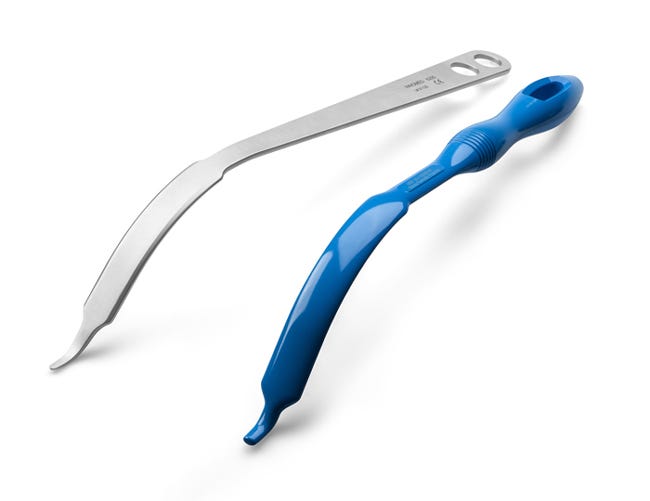Solvay builds case for metal replacement at MD&M East
Although replacing metals with plastics in the medical device space has been a hot topic in the business-to-business media for some time, the switch has yet to be made in countless applications. "The healthcare sector, relatively speaking, has been a fairly late adopter," says Dane Waund, Global Market Manager, Healthcare, Solvay Specialty Polymers (Alpharetta, GA).
June 10, 2014

Although replacing metals with plastics in the medical device space has been a hot topic in the business-to-business media for some time, the switch has yet to be made in countless applications. "The healthcare sector, relatively speaking, has been a fairly late adopter," says Dane Waund, Global Market Manager, Healthcare, Solvay Specialty Polymers (Alpharetta, GA). The company came to the Medical Design & Manufacturing East event in New York City this week to, well, start spreading the news, especially among manufacturers who are used to working with metals. Solvay Specialty Polymers has published a case study that focuses on single-use and reusable surgical retractors made, respectively, from Ixef polyarylamide (PARA) and AvaSpire polyaryletherketone (PAEK). It is showing samples of the devices at booth 1271.
"Our goal with this project is to show medical device OEMs ways in which high-performance polymers can replace metals in especially challenging applications," says Waund. "The retractor is not an obvious choice," he adds, for a number of reasons. For instance, it is subjected to high mechanical loads, and the reusable version must be able to withstand up to 1000 steam sterilization cycles.
The reusable retractor is made from PAEK, which provides a high stiffness-to-weight ratio, hydrolytic stability at elevated temperatures, and chemical resistance.

PARA was the material of choice for the single-use model. In addition to strength and stiffness, its properties include an excellent surface finish and compatibility with gamma sterilization.
Because the material is injection molded, machining is eliminated and manufacturers can reduce costs compared with stainless-steel devices. Other advantages include greater design freedom to enhance aesthetics and improve ergonomics, and the ability to produce the device in various colors, thus facilitating its identification in the operating room.
The case study provides medical device manufacturers mulling a move from metal to plastics with a roadmap of sorts. "To help customers make the transition, we conducted an in-depth study on end-use performance, biological safety, and economics, and developed a practical seven-step metal replacement plan," says Waund.
The healthcare market, understandably, is risk averse, says Waund, which explains why it is lagging in the metal replacement trends seen in other sectors. "We hope to bring about a mindset change in this regard," he adds, and the company has developed robust regulatory support for manufacturers to address concerns they may have. "We understand that FDA looks at material substitution as a significant change, and we have developed master access files to help them make the transition with confidence," says Waund.
MD&M East, co-located with PLASTEC East, runs through June 12 at the Javits Convention Center.
— Norbert Sparrow
Norbert Sparrow is Senior Editor at PlasticsToday. Follow him on twitter @norbertcsparrow and Google+.
About the Author(s)
You May Also Like




